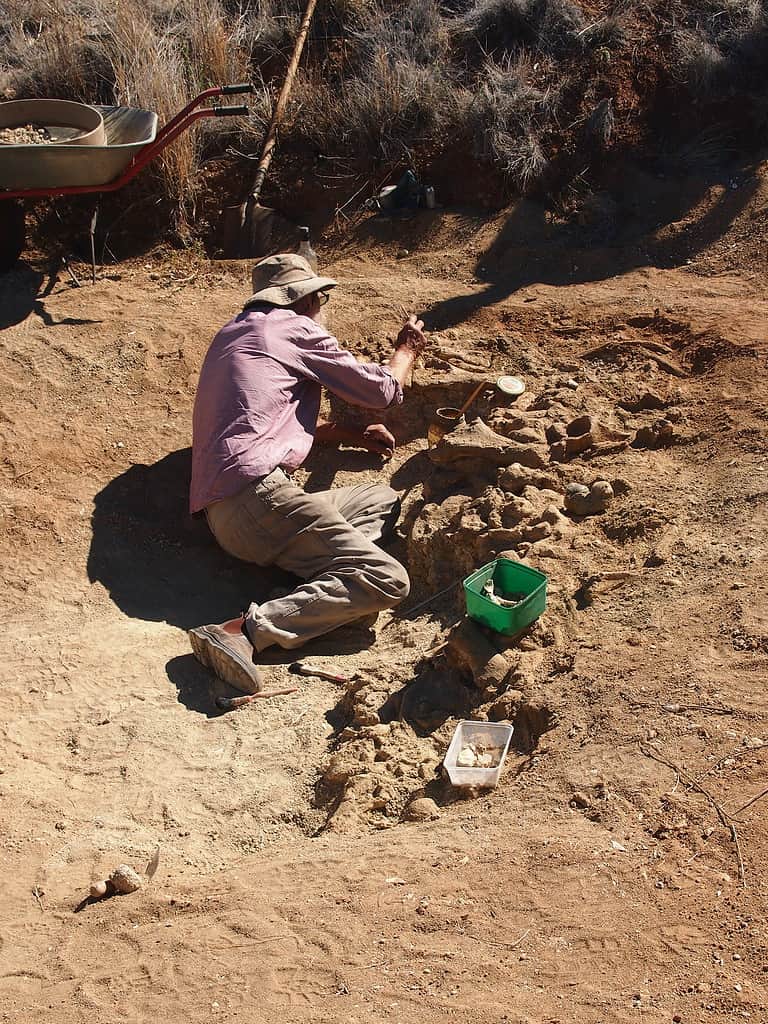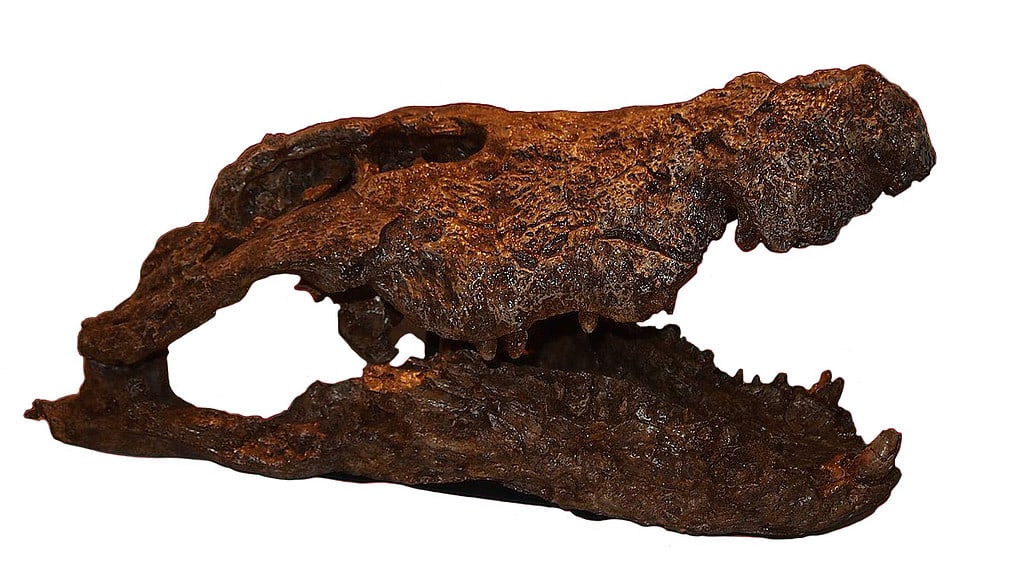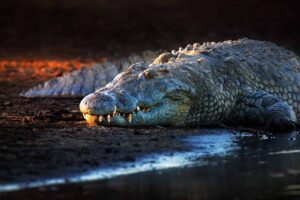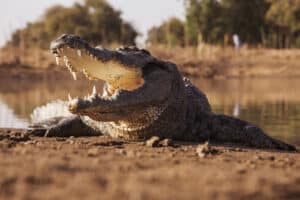A team of researchers recently studied a collection of 16 specimens of an extinct species of prehistoric crocodile in central Australia. In a recent study published in Papers in Palaeontology, scientists describe a new species of crocodile from the Baru genus of extinct crocodilians from the Oligo-Miocene era of Australia. This ancient era extends from 33.9-5.33 million years ago. Researchers date the specific fossils to the late Miocene era from 12-5.5 million years ago. By studying a large sample of skull bones, scientists were able to describe this species, now named Baru iylwenpeny. The species’ name originates from the aboriginal Anmetyerre language, meaning “excellent and skilled hunter”.
All fossils from the 16 studies specimens of this new species of crocodile originate from the Alcoota Scientific Reserve in central Australia. According to the paper, this site is part of the traditional lands of the Alyawarr and Anmatyerr-speaking aboriginal peoples. On these lands, archaeologists unearthed the fossils from soil characterized by sand and silt. Scientists have been studying this site since the 1960s, but a team did not unearth the remains of Baru iylwenpeny until 1990. However, researchers had not thoroughly studied or described the species until recently.

Researchers described
Baru iylwenpenyfrom the Alcoota Scientific Reserve in Central Australia.
©Mark Marathon CC BY-SA 3.0 – License
New Species of Crocodile: Baru iylwenpeny
According to the paper, the new species is the geologically youngest yet discovered of the Baru genus of crocodilians. Before the description of Baru iylwenpeny, there were only two species in this ancient genus- Baru darrowi and Baru wickeni. Likely, a period of severe drying during the end of the Miocene caused widespread extinction of the Baru genus and other members of crocodilians across Australia. Once inland rivers began flowing again, a new genus of crocodiles took over the land once inhabited by Baru.
The Baru genus in the Mekosuchine clade is commonly known as the cleaver-headed crocodile. This common name references their broad, deep-set, and short skulls. These crocs lived in regions of freshwater pools surrounded by swampy forests. There they ambushed prey. And like other species in the Baru genus, Baru iylwenpeny ate just about anything it wanted. The diet of this opportunistic, skilled ambush predator included insects, other reptiles, birds, fish, amphibians, and mammals, including large marsupials. However, scientists believe the hyper-development of the jaws in the crocs of the Baru genus suggests these predators were particularly adept at preying on large vertebrates. One of these large vertebrates may have included the giant flightless bird, Dromornis stirtini. This colossal bird stood over 9 feet tall and weighed 990-1,100 pounds.
About the Studied Specimens
According to the paper, the skull of Baru iylwenpeny is subtriangular with a bluntly rounded snout tip. The largest specimen had a skull reaching a maximum of 23 inches long. The maximum width of the skull measures 16.5 inches. The upper portion of Baru iylwenpeny‘s jaw is notably short, broad, and deep. Compared to the other two described species in the Baru genus, Baru iylwenpeny had larger back teeth. Additionally, it featured a wider snout that allowed for the addition of an extra front tooth. These features aided Baru iylwenpeny in being such a fierce predator.

The skull shape of
Baru iylwenpeny aided in its prowess as an apex predator.
©Mark Marathon CC BY-SA 4.0 – License
The photo featured at the top of this post is © nattanan726/Shutterstock.com
Thank you for reading! Have some feedback for us? Contact the AZ Animals editorial team.






